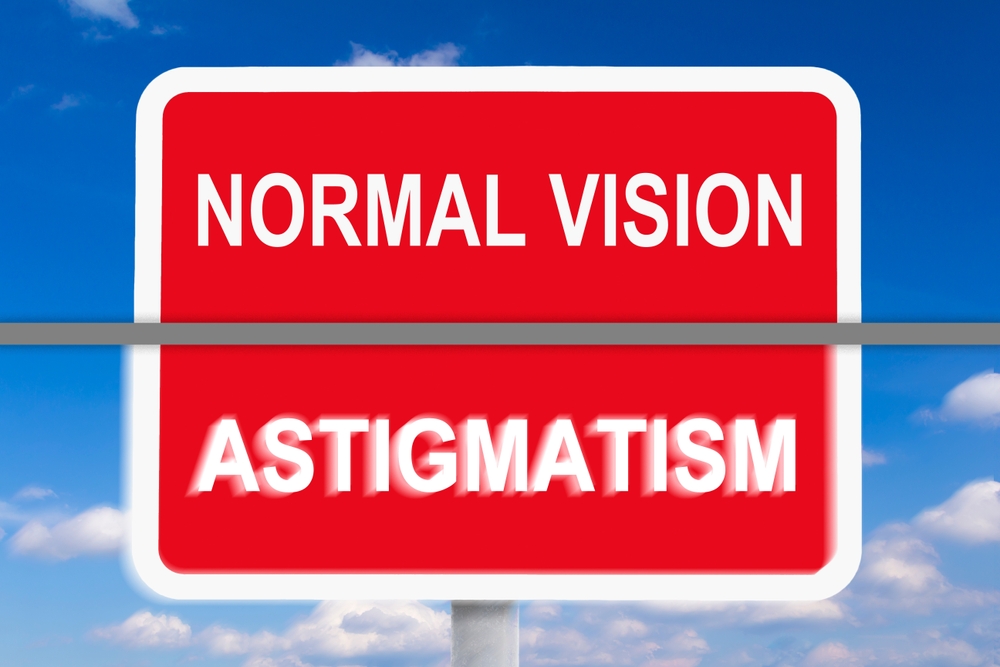According to statistics, around 77% of women and 68% of men wear glasses or contact lenses. If you’re one of them, you might have heard of an astigmatism – or recently been diagnosed with one. If you’re not sure what astigmatism is or what you can do about it, we’ve broken down everything you need to know below.
What is astigmatism?
Astigmatism is a common eye problem that causes blurred vision. It happens when the cornea of the eye or the lens inside the eye has an irregular shape.
In a typical eye, the cornea and lens form an equal curve in all directions which helps you see clearly as light rays can easily penetrate the retina at the back of the eye. If you have astigmatism, the cornea or lens is curved more in one direction than the other. This causes light rays to focus unevenly, blurring or distorting your vision.

What are the symptoms of astigmatism?
People with astigmatism may experience symptoms such as blurred or distorted vision, eyestrain, headaches and difficulty seeing at night. It’s often diagnosed alongside short or long-sightedness.
How is astigmatism treated?
Luckily, if you’ve got astigmatism, it’s easily treated. You can use contact lenses for astigmatism to help to correct your vision or if you don’t wear contacts, glasses are also available. Whichever option you choose, the corrective lenses in each can help to correct the curvature of the eye lens, in most cases.
Can I get surgery for astigmatism?
If your astigmatism is severe or you don’t want to wear contact lenses or glasses, you can get laser eye surgery. Refractive surgery works by reshaping the cornea to correct the irregular curvature. This helps to improve your vision.
This is usually only recommended for people with more severe vision problems as it comes with potential risks and side effects.
What treatment is best for people with astigmatism?

The best treatment option depends on your preferences and how severe your astigmatism is. If your eyesight is severely affected, then laser eye surgery might be the best option. However, if you don’t want to undergo surgery or your astigmatism is mild to moderate, simply using corrective lenses can make a huge difference. In many cases, this is enough to completely rectify your vision.
Final thoughts…
If you have astigmatism, the good news is that you’re not alone – the condition affects a significant proportion of the adult population. As a highly treatable condition, recognising the symptoms is the first step towards your diagnosis and treatment.
The best treatment approach depends on your preferences and the severity of your astigmatism. Whether you opt for corrective lenses or surgery, addressing your astigmatism can significantly enhance your quality of life by restoring your vision and alleviating any uncomfortable symptoms.





